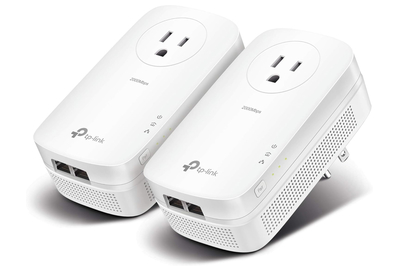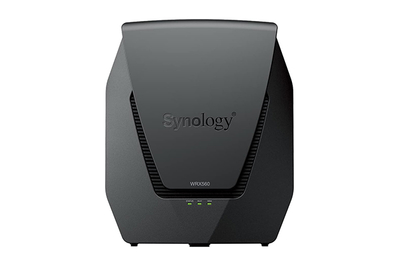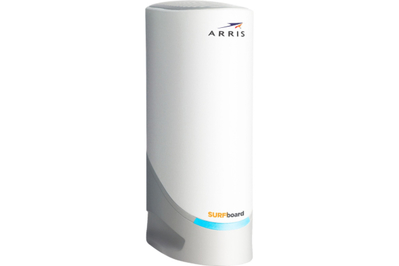If your Wi-Fi cuts out when you’re streaming a movie, it’s a bummer. But if it happens while you’re talking to your boss over Skype or giving a presentation via Zoom, it can feel like a calamity. Working from home means you may have to be your own IT department and manage your Internet connection so that you can access company resources, connect with colleagues, and prove you’re not slacking off. You can fix some problems without spending a dime, but some issues require buying new hardware.
Free fixes that can speed things up
Some of the most effective tricks to improve your home network are also the cheapest, so don’t rush online to buy new tech before tackling a few finer setup issues.
Just move closer to your router. Yes, it seems simple. But moving to a couch or table next to the router can stabilize a spotty connection during a call—and if you need the better speed only intermittently, it may be the most effective solution with the least amount of hassle.
Update your router’s firmware. Firmware improvements often include speed tweaks and can solve known problems with buggy devices. Most mesh-networking kits and many recent routers have automatic firmware updates, but some routers make you log in to your router’s admin page and then check and update the firmware manually. Generally, you can find firmware updates under “system settings,” “advanced settings,” or “system tools,” but a Google search for your router’s model number should bring up a user manual with more detailed instructions.
Put your Wi-Fi router out in the open, in a central spot. Don’t hide the router away in a cabinet—that can contribute to overheating, and the materials in the cabinet can block Wi-Fi signals. Wi-Fi signals radiate out from the router, so placing the router in the center of your home is your best bet, provided you can relocate the router and cable modem together. If you can’t plug in your router anywhere else, look for nearby shelves and place the router physically higher in the room with no obstructions around it. If your router has external antennas, make sure they are screwed in tightly. They do no good if they’re still in the box.
Use Smart Connect (band steering) on your router. Band steering acts like traffic control for your router so that your devices connect on the optimal channels. This feature moves slower devices with weaker signals to the 2.4 GHz bands and puts faster, closer devices on the 5 or 6 GHz bands. That way, the smart speaker in an upstairs bathroom, for example, will be on a different channel and won’t interfere with a video meeting on a laptop downstairs. Look for a setting like “Smart Connect” on your router’s administration page. It should be on by default, but if not you can usually find it under the “Wi-Fi settings” tab.
Remove or retire older wireless devices, and unplug things you don’t need right now. Older 802.11g and 802.11n (aka Wi-Fi 4) Wi-Fi devices can tie up your network because they hold on to their network connections longer than newer Wi-Fi 6 and 7 devices do. After all, a router isn’t connected to all your devices simultaneously; rather, it’s switching back and forth between them at a blindingly fast rate. Unplug or turn off older Internet security cameras, tablets, and even older smartphones during work hours. You shouldn’t have to worry about idle devices like game consoles (even if kids or roommates are home), but older smart devices may be constantly connecting to services on the Internet.
Minimize bandwidth-hogging distractions. Listening to Spotify in the background while working is probably fine, but quit the app if you’re trying to get the best speeds possible. And if your connection is causing problems, resist the urge to stream Netflix. Video uses bandwidth you need for connecting to your company’s Web interface, a shared document, or a meeting.
If all else fails, turn off your video. The video portion of services such as Teams, Zoom and Webex takes up the majority of your bandwidth. If you can’t fix your connection, turn off the video or dial in on your phone to hear the meeting. You’ll have to ask the host to send you the slide deck, but it’s the more polite and productive option versus surviving through choppy video on your end.
Things you may have to spend money on
After trying the quick fixes above, you may still have trouble connecting your laptop to Wi-Fi. If it’s time to spend money, you have a few options.
Consider increasing the speed of your Internet subscription. Your router might be able to transmit at a rate over 400 Mbps, but your connection to the Internet is limited by the service plan you’ve subscribed to. Average broadband speeds in 2018 were around 100 Mbps, and some folks still have the plans they signed up for at that time. Average speeds today are closer to 100 Mbps. We recommend checking your connection with Speedtest.net or Fast.com before starting regular Web conferencing. For example, the Zoom service recommends 3-4 Mbps for HD videoconferencing (and you may need more, or a more reliable connection), while kids or roommates streaming Netflix in the next room require 5 Mbps per stream for HD videos. You can change your service level by calling your Internet provider’s customer service line, or modify it on your account page online.
Use an extender for a small dead zone. If your Wi-Fi is good but you have a small dead zone, our latest Wi-Fi extender pick is an inexpensive fix that can improve the reliability of connections in that one problem room in your home. If you often rely on tech support from your ISP, you can try ordering a more expensive extender directly from your provider (AT&T, Comcast/Xfinity, Verizon) that the company will then help troubleshoot.
Hardwire your laptop to the router. If your wireless network is bad, going wired is the most reliable way to eliminate problems like stuttering video conference calls. Plug an Ethernet cable into a spare port in the back of your router and connect the cable to the Ethernet port on your laptop (or a USB-to-Ethernet adapter if your laptop doesn’t have a dedicated port). Ethernet cables can get unwieldy if they’re longer than a dozen feet, but any cord will instantly improve your Internet connection. (For more information on why Ethernet is better, see “A Simple Solution to Bad Wi-Fi: Use Wires.”). If your laptop is in another room far from the router, consider a powerline or MoCA adapter, which uses the wires already in your walls.
If your Wi-Fi sucks everywhere, it may be time to start over. If your router is more than a couple of years old and is struggling in more places than not, a newer router or a mesh kit will improve the range, stability, and speed all over your home. Standalone routers should be fine for average-size homes, while mesh kits are recommended when you need to cover a larger space or if your house contains Wi-Fi–blocking materials such as masonry or metal construction. If you’re working from home with kids home from school as well, your router may need to connect to dozens of devices at the same time. A new router or mesh kit will be able to keep all those laptops, tablets, gaming consoles, printers, and streaming boxes connected to a stable network. Definitely consider a replacement if you’re still using a router from the early 2010s.
Buy your modem. Your router is what creates your Wi-Fi network, but your modem is what allows that network to connect to the Internet through your ISP. You may need to buy a new cable modem in order to subscribe to a faster Internet plan, and doing so will definitely save you a few bucks in the long run.









